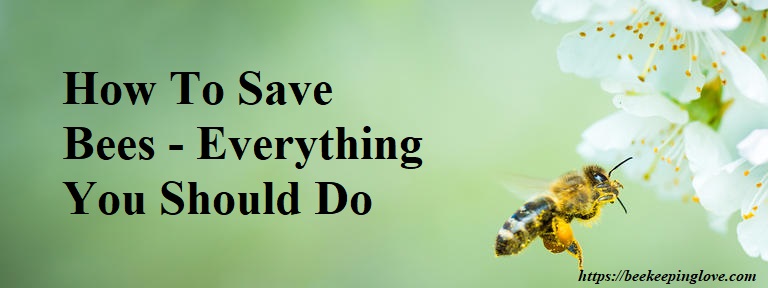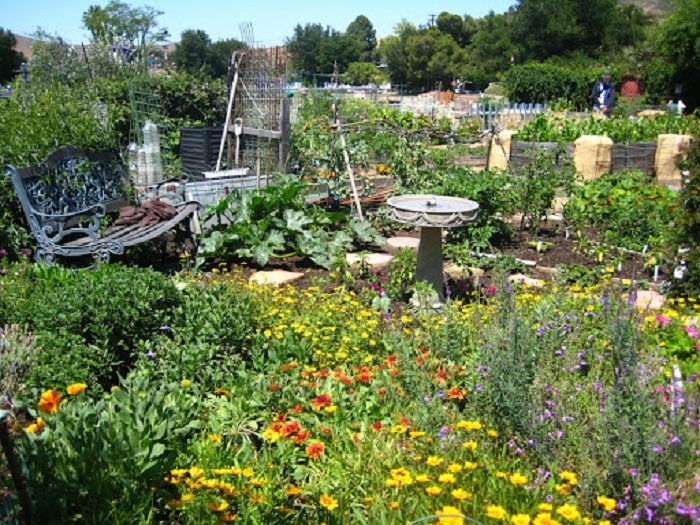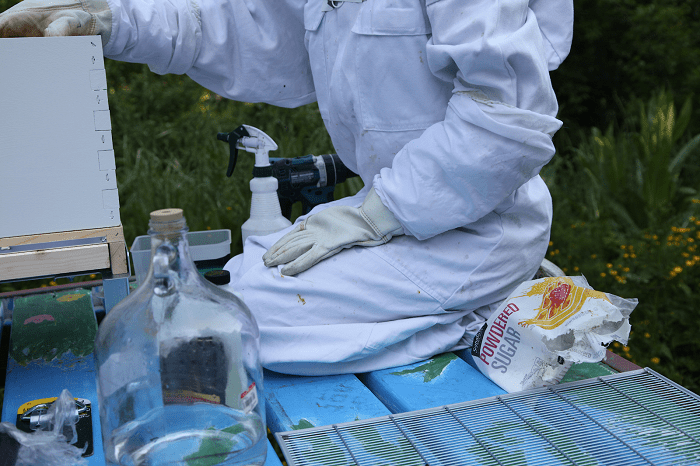Bees are highly vital these days. Bees are not only everyone’s favorite picnic companions, but they are also some of the world’s most important pollinators. Because these little buzzing beauties are so important to our food crops, it is more important than ever to nurture them. Here are some simple ways to help you know how to save bees?
Why are bees dying?
Bees are dying due to a multitude of problems, including pesticides, drought, habitat degradation, a lack of nutrition, air pollution, global warming, and others. Many of these reasons are linked. The basic line is that we know people are mostly to blame for the two most visible causes: pesticides and habitat loss.
Female worker bees live for roughly six weeks in the summer and many months in the winter. During the spring and summer, colonies continuously generate new worker bees, but reproduction slows during the winter. A bee hive or colony will typically fall by 5-10% over the winter and replace those lost bees in the spring. A bee colony may lose 15-20% of its bees in a bad year.
The UK has 20,000 bee species, but their diversity is dwindling: 13 bee species are now extinct, and 35 more are on the verge of extinction. In the last decade, 30% of its bee population has been gone, and almost 97% of its grasslands have vanished. According to the National Agricultural Statistics Service, the number of honey bees in the US has decreased by 60% from around 6 million hives in 1947 to 2.4 million hives in 2008.

>>> Read more: How To Protect Honey Bees From Hornets?
Pesticides and Bees
According to University of California apiculturist Eric Mussen, biologists discovered more than 150 distinct chemical residues in bee pollen. Bayer, Syngenta, BASF, Dow, DuPont, and Monsanto, among other chemical giants, shrug their shoulders at the systemic intricacy, as if the puzzle were too intricate. They advocate no change in pesticide policy. After all, selling poisons to the world’s farmers is a lucrative business.
Furthermore, when modern agribusiness turns grasslands and forests into mono-culture farms that are later poisoned with pesticides, wild bee habitat declines year after year. To halt the global bee loss, we must repair our broken and destructive agriculture system.
What are some ways to save the bees?
-
Plant a bee garden
One of the most serious challenges to bees is a lack of suitable habitat. Where people can construct houses and discover a variety of healthful food sources. By planting a bee garden, you may create a living tunnel of pollen and nectar-rich plants. Growing bee-friendly plants does not require a lot of room. Gardens can be created in yards, windows, flower pots, and planters. You can also work with local organizations and governments to identify ways to improve shared places and areas.

-
For the sake of bees, avoid using chemicals.
Synthetic pesticides, fertilizers, herbicides, and neonicotinoids are extremely toxic to bees. Avoid using synthetics in your garden and green places. Instead, utilize organic materials and natural remedies like compost to improve soil health and helpful insects like ladybugs and praying mantises to keep pests at bay.
-
Plant trees for bees.
Trees provide the majority of nectar for bees. When a tree blooms, millions of blossoms are produced for insects to feed on. Trees are not only a great source of food for bees, but they also serve as a crucial habitat. Bees use tree leaves and resin to build their nests, and natural wood cavities make excellent shelters. By caring for trees and participating in local tree-planting initiatives, you may help bee habitats.

-
Welcome beneficial insects in your garden
Beneficial insects such as hoverflies, beetles and ladybirds hunt aphids and other pests, therefore consider them as partners rather than foes. We can have beautiful gardens while also helping bees and other wildlife. Allowing bees to be your guide and ally will help you alter your patch, fight pests naturally, and pollinate your plants and crops for free. That is more than a fair exchange.
-
Make a bee bath
Foraging and collecting nectar causes bees to build up quite a thirst. Fill a shallow bird bath or bowl with clean water, then arrange pebbles and stones within to break the surface of the water. Bees will land on the stones and pebbles to drink long and refreshingly.
-
Support local beekeepers and organizations
Purchasing locally made honey and beeswax products is the simplest way to express your gratitude. Many beekeepers use hive products to make soaps, lotions, and beeswax candles. Furthermore, local honey is not only sweet, but also aid in the treatment of seasonal allergies! You can also help local beekeeping societies and environmental groups flourish by donating your time, resources, and money.

-
Become a beekeeper
Becoming a beekeeper is one of the most gratifying (and enjoyable) ways to help the bees. Explore the intriguing world and see how caring for your own colony relates to your local surroundings. Learning about and caring for your own colony is an excellent way to become engaged.
Conclusion
There are many misconceptions regarding bees and their value to our world; it is time to educate yourself! This concludes our discussion about bees. These methods do not necessitate the use of advanced techniques. As a result, hopefully we can all work together to safeguard these bees – this kind and helpful companion.
>>> View more: Top 5 Best Beekeeping Books For Beginners
